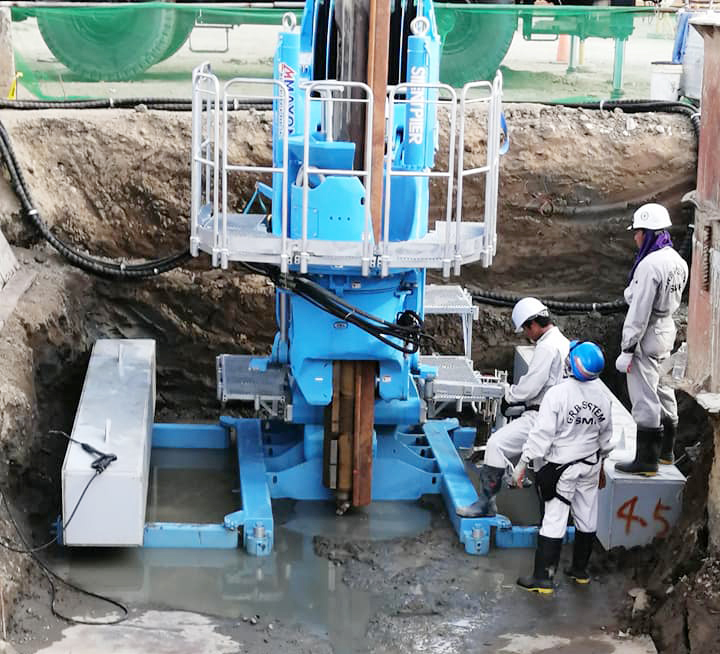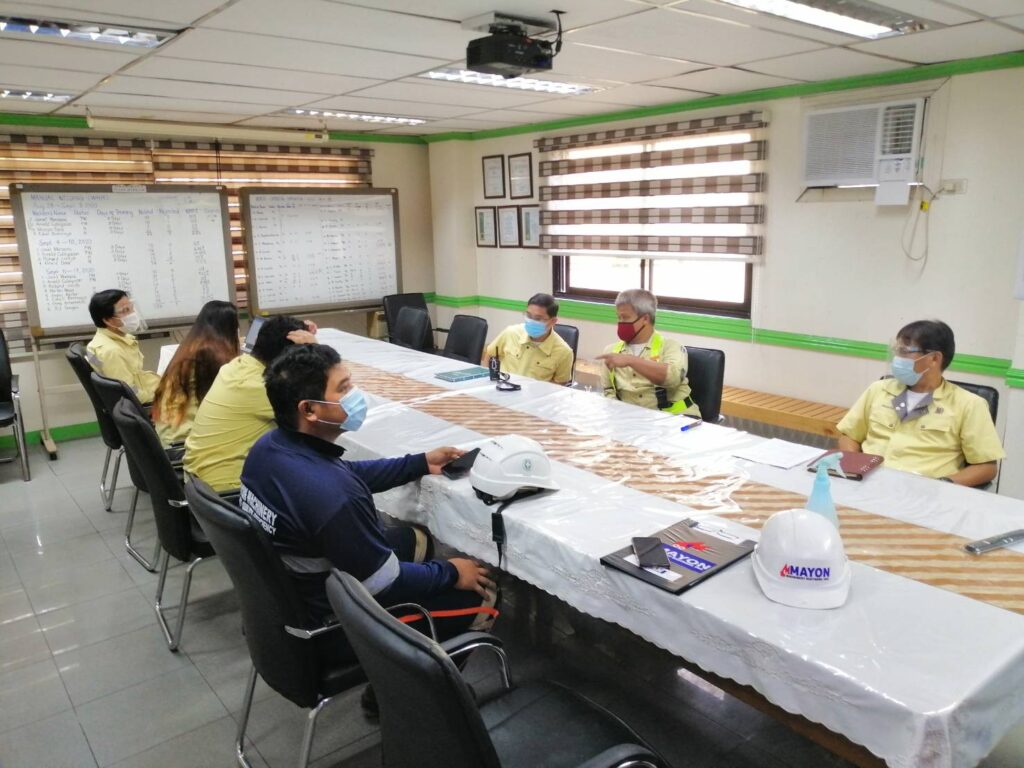
Giken’s Silent Piler Operation and Safety Training
Most of the equipment is built with in-build safety measures to ensure the safety in the use of the equipment as much as possible. But it’s not totally 100% safe without well-trained before operating. Our training program ensures all operators are trained and fully familiarized with the equipment and the work to be performed.

Classroom Training
Table of Contents
Heavy Equipment Operator Safety
It is the operator’s responsibility to know how to operate heavy equipment safely. Operators without proper licenses to operate specific equipment must not be allowed to. Operators must know the proper use and limitations of specific equipment. If the equipment is not designed for a specific task, it should not be used for that job. Operators should know the safe operating practices of specific equipment available in the manufacturer’s instructions or their authorized dealer in the Philippines.
Safety features such as kill switches, guards, shields, reverse alarms, roll bars, or control bars must not be modified or removed. The transmission shafts should be covered. For details, refer to the manufacturer’s instructions for specific equipment.
If an operator is sick, fatigued, or taking medication that may affect his/her ability to safely operate heavy equipment, he/she should notify the supervisor. Such situations can cause physical or mental impairment to operate heavy equipment.
Operators Proper Training
Only highly skilled operators who have demonstrated adequate knowledge, ability, and skills to safely operate heavy equipment should be authorized for operation. In addition:
- Only authorized persons should operate the heavy equipment (with appropriate training and/or licenses) on which they have been trained.
- Operators should know and understand the limitations of the machinery.
- They should follow safe operating procedures, utilize safety features, and heed the manufacturer’s warnings.
Operators Equipment Safety Checks
Operators should follow the procedures below before the start of each shift (a checklist is recommended):
- Approach equipment, walk fully around it, and look for hazards on or near the equipment.
- Inside the cab, remove trash, make sure cab windows are clean, adjust mirrors, check the fire extinguisher, turn on all exterior lights, and make sure seatbelt is ready to use.
- Outside again, check lights, tires, suspension and steering system, exterior hoses and filters. Look for cracks in the metal structure, unguarded moving parts, or other unsafe conditions. Check engine compartment and belts. Make sure fluid levels are correct.
- Inside again, check all gauges and warning lights before starting. Make sure parking brake is set and other manufacturer’s engine start-up guidelines are followed. Start engine; check gauges and warning lights again. Check engine sounds.
- Before moving, warn people in the area. Test your equipment’s movements and make sure the backup alarms can be heard.
List of available courses that MAYON offers currently
- MEWP Training: Mobile Elevating Work Platforms (MEWPs), formally known as Aerial Work Platforms (AWPs) such as boom lifts, scissor lifts, spider lifts, crawler lifts…
- Crane Training: All kinds of cranes including crawler cranes, rough terrain cranes, all-terrain cranes, mini cranes…
- Forklift Training: regardless of brands Manitou, Toyota, Mitsubishi…
- Compact Loader Training: for skid loaders, track loaders
- Backhoe Loader Training
- Telehandler Training: for telescopic handlers both fixed and rotating type
- Operation and Safety Training: for all our distribution brands including Teupen (spider lifts), AlmaCrawler (crawler lifts), HSC (cranes), Giken (silent piler), Socage (truck-mounted aerial work platforms)
Crane Operations Safety Measures
Following safety precautions for cranes should be exercised in conjunction with the general safety precautions for heavy equipment:
- Never hoist objects with unknown weights. It may be difficult to judge the load in some cases (e.g., an object in water). When hoisting a load from water below, the crane takes on the added load imposed by the displaced water as the load is hoisted out of the water.
- When handling a heavy load, raise it a few inches to determine whether there is undue stress on any part of the sling and to ensure the load is balanced. If anything is wrong, lower the load at once and do not attempt to move it until the necessary adjustment or repair has been made.
- Before hoisting a near-capacity load, make sure the hoisting line is vertical. Move the crane instead of lowering the boom, since swinging a capacity load increases the chance of tipping.
- When lowering the boom under load, use extreme caution. Check the load chart with attention to radius changes and observe the radius indicator. These charts are posted in the operator’s cab. Never lower the hoisting line and the boom simultaneously. When lowering loads, use a low speed not to exceed the hoisting speed of the equipment for the same load. The ordinary hoisting speed of a 30-ton, motor-operated crane is about 18 feet per minute with a rated load. Stopping the load at such speeds in a short distance may double the stress on the slings and crane.
- Be careful to guard workers, other equipment or objects against being hit by swinging loads. Do not swing loads over workers. If it is necessary to move loads over occupied areas, give an adequate warning (by bell or siren) so workers can move into safe locations.
- Do not attempt dual lifts unless absolutely necessary and only with competent supervision throughout the operation. Dual lifts are extremely dangerous. Shifting of the load can cause overloading and failure of one crane. This throws the entire load onto the second crane causing it to fail. Before making a dual lift, carefully determine the position of the cranes and the location of the slings to balance the load properly.
- After repair or alteration of a crane or derrick involving its hoisting capacity or stability, its safe working load should be determined by a competent person. Have this person issue a written statement specifying the safe working load.
- Test the brakes at the beginning of each new shift, after a rainstorm, or at any other time when brake linings may have become wet. When hoisting a capacity load, check the brakes by stopping the hoist a few inches above the ground and holding it with the brake.
- Equip all cranes with an appropriate fire extinguisher. Keep the extinguishers maintained and ready for use.
To help you be safer in your workplace, whilst operating your equipment, Mayon provides the operation and safety training available in both virtual and in-person at our Service Center. All Certifications are provided by Mayon Machinery after test and practical evaluation. Contact us today for the details of the training courses you need.
Schedule Your Training Course
Fill out your details below with the training course that you need, date and preferred hour and we’ll get back to you shortly.
